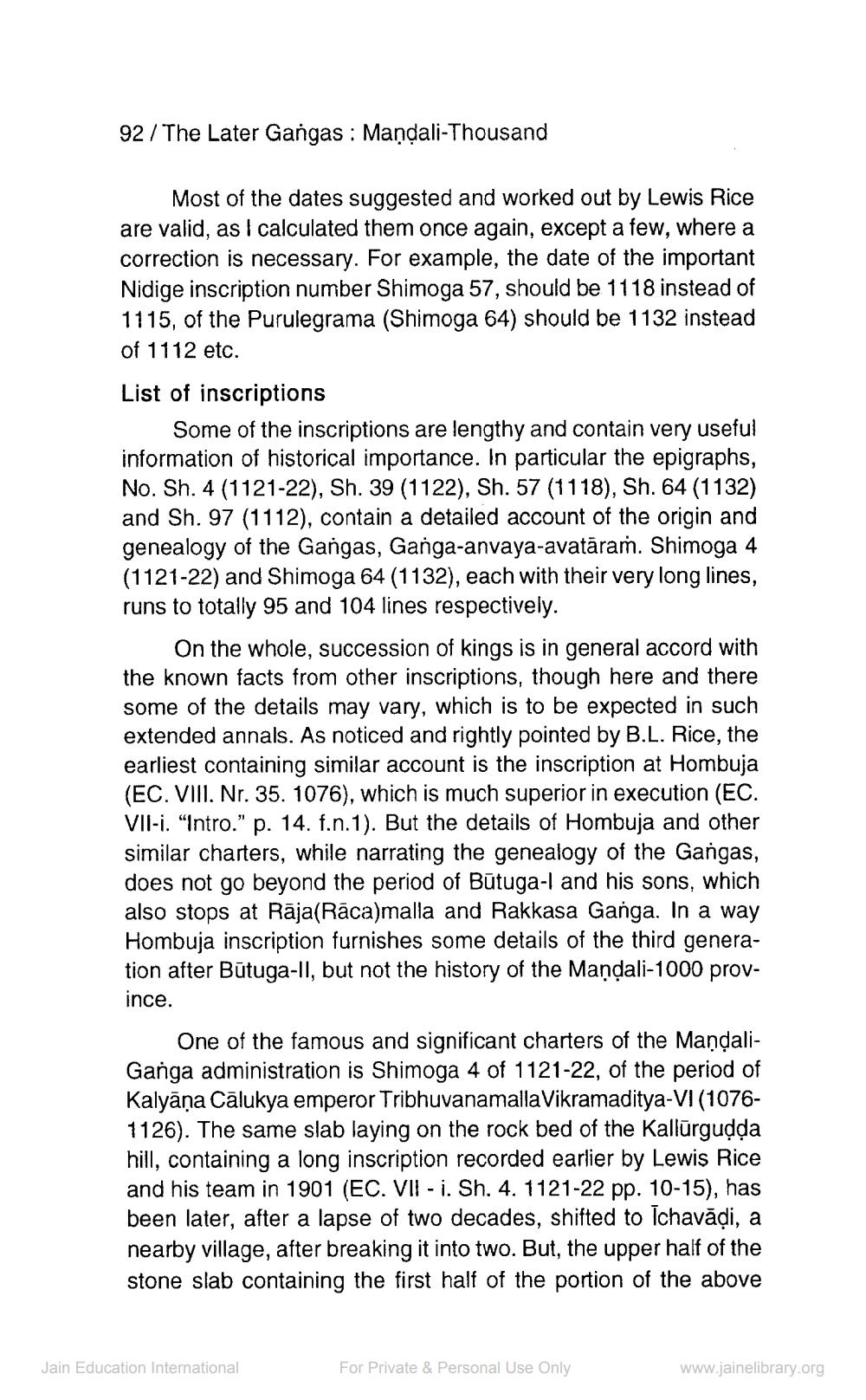________________
92 / The Later Gangas : Mandali-Thousand
Most of the dates suggested and worked out by Lewis Rice are valid, as I calculated them once again, except a few, where a correction is necessary. For example, the date of the important Nidige inscription number Shimoga 57, should be 1118 instead of 1115, of the Purulegrama (Shimoga 64) should be 1132 instead of 1112 etc. List of inscriptions
Some of the inscriptions are lengthy and contain very useful information of historical importance. In particular the epigraphs, No. Sh. 4 (1121-22), Sh. 39 (1122), Sh. 57 (1118), Sh. 64 (1132) and Sh. 97 (1112), contain a detailed account of the origin and genealogy of the Gangas, Ganga-anvaya-avatāram. Shimoga 4 (1121-22) and Shimoga 64 (1132), each with their very long lines, runs to totally 95 and 104 lines respectively.
On the whole, succession of kings is in general accord with the known facts from other inscriptions, though here and there some of the details may vary, which is to be expected in such extended annals. As noticed and rightly pointed by B.L. Rice, the earliest containing similar account is the inscription at Hombuja (EC. VIII. Nr. 35. 1076), which is much superior in execution (EC. VII-i. "Intro." p. 14. f.n.1). But the details of Hombuja and other similar charters, while narrating the genealogy of the Gangas, does not go beyond the period of Būtuga-l and his sons, which also stops at Rāja(Rāca)malla and Rakkasa Ganga. In a way Hombuja inscription furnishes some details of the third generation after Būtuga-ll, but not the history of the Mandali-1000 province.
One of the famous and significant charters of the MandaliGanga administration is Shimoga 4 of 1121-22, of the period of Kalyāņa Cālukya emperor TribhuvanamallaVikramaditya-VI (10761126). The same slab laying on the rock bed of the Kallūrgudda hill, containing a long inscription recorded earlier by Lewis Rice and his team in 1901 (EC. VII - i. Sh. 4. 1121-22 pp. 10-15), has been later, after a lapse of two decades, shifted to Ichavādi, a nearby village, after breaking it into two. But, the upper half of the stone slab containing the first half of the portion of the above
Jain Education International
For Private & Personal Use Only
www.jainelibrary.org




